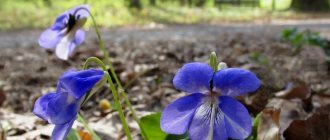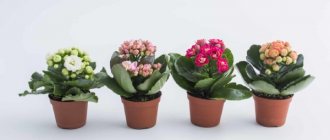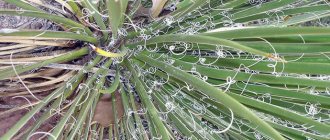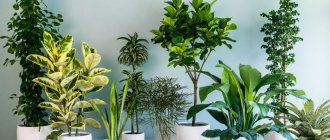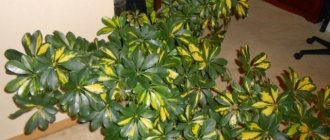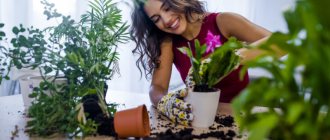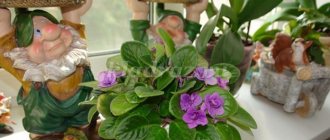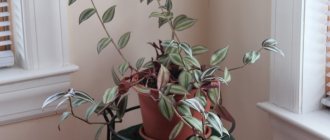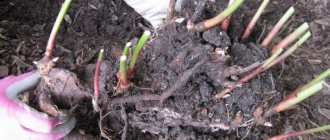Watering and spraying flowers and indoor plants
2.
3.
Watering and spraying, with the help of which the water regime of plants is regulated, is a kind of art. The health, proper development and flowering of plants depend on skillful and timely watering, as well as on spraying. Sometimes all the conditions are created, but the watering is incorrect - and the plant gets sick and then dies. The frequency and abundance of watering depends on the type and condition of the plant, its growing conditions and the weather. There is a rule: water a lot in summer and little in winter. Plants require a particularly large amount of water in the first half of summer, during the period of most intensive growth, when young leaves evaporate water strongly. In hot weather, additional spraying is necessary. As growth weakens and during the flowering period (autumn), watering should be reduced. During the dormant period, most plants require moderate or even scanty watering.
You should never water plants unless you are sure that watering is necessary. It is better to water the next day, but so much so that the water reaches the pan. With sufficient watering, the water necessarily flows onto the tray - this indicates that the plant is watered correctly. From pallets on which pots with heavy soil stand, water is drained immediately after watering, with light soil - after 30-40 minutes (light soil quickly passes water through itself, and the drained water is absorbed back).
The watering regime is divided into 3 groups:
Abundant watering. Plants are watered immediately after the soil in the pots has dried out. Most tropical plants with thin, delicate leaves require this watering, as well as some plants with denser leaves (lemon, ficus, gardenia, ivy, coffee, etc.). These plants suffer greatly from drying out. All plants need abundant watering during flowering and growth. But do not confuse abundant watering with excessive watering. The soil above must dry out!
Moderate watering. Plants are not watered immediately after the top layer has dried, but after a day or two. That is, they are slightly dried. This is how plants with fleshy or heavily pubescent leaves, thick roots and rhizomes, bulbous and tuberous plants are watered.
Rare watering. Plants are left dry for several days, weeks, months. This applies to succulents and bulbous plants during their dormant period.
Most plants are watered abundantly in summer and moderately in winter (however, the leaves of the plant should not wither from drying out). Plants that are overdried repeatedly gradually weaken and lose their decorative appearance. There are plants that cannot tolerate overdrying at all and die immediately after it (ivy, azalea, hoya, cissus, conifers, camellia, citrus). It is recommended to immerse pots with overdried soil in a large bowl with heated water (35-30 degrees) for 5-6 hours; warm water is absorbed faster by the roots. After the bath, the pots are placed on a wire rack to drain excess water.
It should be noted that excess moisture is often more destructive for plants than its lack. It is not so noticeable, but its consequences (acidification of the soil, forcing out of it the air necessary for the roots to breathe, etc.) are difficult to correct and often lead to the death of the plant. If the plant turns out to be flooded, then it is necessary to wash the outside of the pot and loosen the surface of the soil to give more air access to the roots, or even remove the top layer of soil to the roots and add fresh soil.
If the soil has become sour, then the plant is removed from the pot, the roots are freed from the old soil and washed in clean water, the rotten roots are removed and the plant is planted again in the soil of the proper composition, but the pot is taken in a smaller size. Newly transplanted plants need moderate watering.
You need to water the plants with water at room temperature (the water temperature should not be lower than the air temperature!). The hotter the room, the warmer the water should be. Watering with cold water in a warm room can cause leaves to fall. It is better to settle the water before watering so that the chlorine evaporates from it and some of the calcium carbonates settle (many plants cannot tolerate it). A more effective way to soften water is to add special tablets for softening water in aquariums, which can be easily purchased at a pet store.
Spraying increases air humidity and reduces water evaporation by leaves. Plants are sprayed with a spray bottle. For spraying, take warm, clean water. During the growth period (summer), most plants are sprayed daily in the morning or evening; in dry and hot weather - in the morning and evening. Plants exposed to direct sunlight should not be sprayed, as burns may appear on the leaves. To avoid rotting, it is not recommended to spray plants with velvety leaves and leaves covered with hairs (gloxinia, coleus, pelargonium, begonia). For such plants, air humidity must be increased in other ways, for example, by spraying the air around the plant or placing a vessel with water next to the plant, which will evaporate. Camellias, ficuses, ferns and all plants with leathery and dense leaves especially need spraying. Spray the leaves on both sides until the water begins to drip from the leaves in drops. However, one should not think that spraying replaces watering. This is just an auxiliary technique to avoid dry air, which is destructive not only for indoor plants, but also for you and me.
During the spring-summer growth period, it is useful to use watering baths. First of all, you need to make sure that there are no pests, then rinse the outside of the pot well and place it in a bucket of warm water, slightly pink from potassium permanganate. The water should be 5-7 cm above the soil level in the pot. The bath is continued until the release of air bubbles stops, after which the pot with the plant is placed on a wire rack to drain excess water. Mineral fertilizers can be added to the water prepared for the bath. Even in the driest and hottest times, a watering bath is enough for 5-6 days.
Another important problem is watering plants during vacation. You are leaving for several days, the summer heat is on, the soil in the flower pot dries quickly - it would seem that your green pets are doomed to death, since there is no one to water them. This is where little tricks can come to the rescue. There are methods that will ensure gradual, long-term moistening of the soil in flower pots:
Automatic watering. For plants that require constant immersion of the bottom of the pot in water for normal growth (calla lilies, cyperus and other marsh plants), automatic watering is as follows: place the pot with the plant on a baking sheet with water and strengthen the overturned bottle of water, which maintains a constant level all the time water in a baking tray. To do this, the edge of the bottle neck is placed at the surface of the water in a baking tray. For other plants, automatic watering is even easier. Take a narrow gauze bandage soaked in water, which is slightly twisted. One end of the bandage is dug into the ground of the pot to a depth of 3-5 cm, and the other is lowered into a vessel with water located below the flower pot (the water level should be below the bottom of the flower pot). Duration of action: A 10-liter container filled to the brim is enough for six plants for about a week.
Dropper. This method is very convenient for plants in large pots. The bottle is filled with water and closed with a stopper that has 2 holes. This bottle is placed in a flower pot, turned upside down. For large plants it is better to take two bottles. Duration of action: at least a week. You can also use a regular medical dropper. Place a vessel with water above the pot with the plant, insert the dropper needle into the soil near the root, set the liquid supply regulator so that drops drip no more than once per second.
The watering bath discussed above is also used.
There are many more ways to maintain soil moisture levels, but the ones discussed above are the most convenient, reliable and least labor-intensive.
Before leaving: check how much water is available; place the plants in a shaded area; remove all wilted leaves; pinch off buds that are ready to open in the near future, as flowering plants need more abundant watering.
After returning: if, despite all your efforts, the plant still received less water than necessary, then trim off any wilted shoots and leaves and immerse the pot in water until no more air bubbles are released. Then remove the pot from the water, place the plant in a shaded place and spray the leaves often; if the plant received more water than it needed, then remove it with its roots from the pot and wrap it in cloth or paper to remove excess moisture. Then do not place the plant in the pot for another two or three days, let the roots dry.
The best way to combat flower pests is to carry out precautionary and preventive measures: a careful inspection of purchased and existing plants. If pests are detected, plants must be isolated. Warm up or freeze the dishes and soil before use (i.e., disinfect). It is necessary to monitor the correct lighting, nutrition and watering regime for these crops.
If pests are found, you need to collect them by hand or wash them off with a strong warm stream from the shower (do not forget about the back side of the leaves). This method is especially effective against spider mites if repeated several times a week.
Try to get rid of aphids, scale insects, false scale insects and scale insects using a stiff toothbrush dipped in a soap solution (dilute 1 part laundry soap in 6 parts water).
To combat other types of “sucking” pests, wash the plant with denatured alcohol or ethyl alcohol, but using a soft brush. 5 minutes after treatment, the plants need to be rinsed in the shower.
Using infusions of onion, garlic, red hot pepper and tobacco dust, you can try to cope with aphids, thrips, scale insects, false scale insects and mites. Do not hope for a quick victory - you will have to repeat all this more than once (with an interval of 1 time per week).
It is not advisable to use chemicals at home, since the use of a pesticide can affect your health. But if there are too many aphids, thrips, spider mites, try using fitoverm.
RECIPES FOR PEST CONTROL:
Pour 50 g of crushed garlic into 1 liter of warm water and leave for 20 minutes. The strained solution can be diluted with water up to 1 liter. It not only protects plants well, but also disinfects the soil. It is advisable to carry out processing in the evening or in cloudy weather.
Pour 40 g of tobacco into 1 liter of water and leave for 2 days, after which the broth is boiled for 2 hours, filtered and diluted in 1 liter of water.
Pour 1 teaspoon of finely chopped onion into 1 glass of water and leave for 24 hours. Strain and process the plant. After a week, repeat the procedure.
Pour 20 g of onion peel into 1 liter of warm water and leave for 12 hours, then strain. Plants need to be sprayed once a week at least 3 times.
Pour 50 g of dry or 100 g of raw crushed hot pepper into 1 liter of water and boil for 1 hour. After 2 days, strain the broth and dilute with water (1 part solution to 7 parts water).
All these solutions are best used with the addition of laundry soap: add 3 g of soap to 1 liter of solution.
In the old days, the prevention of infected plants was carried out as follows: 50 g of soap was diluted in 0.5 liters of hot water and ¾ cup of kerosene was added. All this was diluted in 5 liters of water.
Modern amateur gardeners have invented a unique way to combat pests: the infected plant is placed in a plastic bag filled with cigarette smoke. You can fill the bag with cigarette smoke using an aquarium microcompressor. You need to keep the plant for an hour.
It is not advisable for plants to remain in one place throughout the year: after all, during the dormant period, plants need a cooler place and need to be watered less often. When watering, make sure that the water does not remain in drops on the leaves. Do not use cold and hard unboiled water.
They should also not be placed near central heating radiators, since dry air is the main cause of sickness in indoor plants. Plants can be moistened by spraying them with a spray bottle.
You need to cut off wilted leaves and flowers with a clean, sharp knife, sprinkling the cut area with charcoal powder. It is not advisable to pick them by hand.
Plants need to be replanted into a larger container so that the root system can develop.
The cause of changes in leaf color and yellowness may be a lack of nutrients. Plants need to be fed regularly, but in certain doses, since not only a deficiency, but also an excess of nutrients is harmful.
Both excess and lack of moisture are harmful to indoor plants. In both cases, the ends of the roots lose their freshness. If you water too much, the soil becomes acidic, causing the roots to rot and the plant to die.
Periodically look at the back of the leaves, as this is where pests often settle.
Compost
A good spring all-purpose organic fertilizer containing nitrogen can be obtained by composting plant waste. On average, compost from plants such as lupine and clover contains 0.4-0.7% nitrogen, and from green foliage - about 1%. When added to the soil, compost actively saturates plants with essential nutrients and makes the soil more water- and breathable.
Mature compost is applied to all crops at the rate of 15-20 kg per 1 sq.m. This valuable fertilizer should be applied during spring plowing (digging) of beds, in holes when planting seedlings, tubers, trees and shrubs, and also as a mulching material. The fertilizer is scattered over the surface of the ground and carefully dug to a depth of 5 cm.
In the spring, it is advisable to add compost to the greenhouse - 1-1.5 buckets per 1 sq.m to fertilize the surface layer of the earth or a layer of at least 25 cm as a warming bedding under the fertile soil layer.
- Compost - how to prepare it correctly and quickly
Find out how to properly prepare compost with your own hands and use it effectively in your garden.
Plant protection from fungal diseases
Of the diseases that most often occur in indoor flowers, fungal diseases are the most common. Plants are affected by true and downy mildew. Powdery mildew appears as a whitish coating on the stems and upper side of leaves, while downy mildew appears on the underside of leaves.
Whitish coating of powdery mildew
Over time it turns brown, the leaves dry out and fall off.
Cause
of appearance
: increased soil moisture, overfeeding plants with nitrogen fertilizers.
Treatment:
Remove diseased leaves and completely treat the plant with potassium permanganate (pinkish solution). Additionally, it is worth treating the diseased specimen with a soapy medicinal solution (add 4-5 g of green or laundry soap and 0.5 teaspoon of baking soda to 1 liter of water) - spray and rinse after 3 hours. Repeat the treatment at least 4-5 times.
Downy mildew
(downy mildew) over time acquires a light gray color, the leaves wrinkle and dry out.
Cause
of appearance
: high air humidity, waterlogging of the soil.
Treatment
: spray once a week with a 1% solution of Bordeaux mixture (at least 5-6 times). Destroy severely affected plants. You can treat a sick specimen with Topaz, Vectra or antibiotic solutions.
Dracaena needs proper pruning
After the young dracaena is well rooted and has reached a height of about 30 cm, it should be trimmed. Using well-sharpened garden shears or a knife, remove the upper part of the flower (9-10 cm) so that leaves remain on the top. Thanks to this simple process, after about a month, a thickening will form under the cut site, from which new stems will subsequently grow.
Restore blood vessels after coronavirus: recommendations from a therapist
The Home Cleaning Basket and Other Simple Time-Saving Tricks
Bob is still at the peak of fashion. Ideas for fashionable and stylish bob haircuts
Protecting plants from bacterial damage
There are no clear signs of this disease. In the affected areas, softening of the tissues of the stem, leaves, and buds is observed. The putrefactive process is accompanied by a characteristic odor.
Cause
of appearance
: waterlogging of the soil, high temperature and air humidity.
Treatment:
spraying with a 1% solution of Bordeaux mixture, replanting plants with mandatory disinfection of tools, dishes, and soil. It is better to destroy severely affected plants.
Protection against viral infection
The first sign of viral infection is slow suppression of the plant (i.e. slowing of growth, dropping of buds, loss of turgor). Externally, the disease manifests itself in the form of leaf curl and the appearance of a mosaic pattern on the leaves and stems.
Reason for
appearance
: viruses are carried by aphids and thrips.
Treatment
: extermination of pests, cutting out damaged areas. It is recommended to treat the plant itself with a light pink solution of manganese. In case of extensive damage, destroy the plant.
The absolute majority of the disease control measures discussed above boil down to creating optimal living conditions for plants. Preventive measures will protect indoor pets from diseases and create a pleasant emotional background in the apartment.
Houseplants most often die due to improper watering. One of them is that the soil always remains moist. When maintaining other plants, you need to ensure that the soil has time to dry thoroughly between waterings. For others, soil moisture depends on the time of year. Check the individual needs of each plant.
In any case, good drainage is needed
so that the roots are not in the water. In late spring and summer, water the plants in the evening, at sunset, and in the cold season - in the morning.
Water, both for irrigation and spraying, should be at room temperature, in the cold season - slightly warm. If possible, do not use hard tap water - the lime it contains leaves stains on the leaves and clogs their pores. Well-settled, filtered or boiled water is more suitable.
Previously, rain or snow melt water was considered the best for watering indoor plants; boiled water was completely unsuitable for these purposes. But now the environmental situation has worsened, “acid” rains and precipitation often contain so many harmful impurities that such water cannot be used. Tap water is chemically and bacteriologically safer, but it contains a lot of chlorine and additives that protect pipes from corrosion. Therefore, it is better to filter cold tap water.
If there is no household filter, settled boiled water is used to water the plants. When boiling, hardness salts form scale and the water becomes softer.
Some plants cannot tolerate lime, and when watered with regular tap water, lime accumulates in the soil, makes it alkaline, and the plant dies. You can reduce the lime content in water like this: dissolve 1 teaspoon of oxalic acid in a bucket of tap water, mix and let the water settle. Calcium salts precipitate in the form of white flakes. Gradually, the sediment sinks to the bottom of the bucket, and water without sediment is used for irrigation.
To water plants that prefer acidic soil, the water can be softened by soaking peat in it in a linen bag. The bag is used several times, then the peat is changed.
Always check the soil before watering
to find out how deeply it has dried. Dry soil crumbles well, lumpy soil means there is still enough moisture in it.
When watering a plant, fill the pot to the brim
. Excess water will seep through the soil and accumulate in the pan. Pour out all the water from the pan 15 minutes after watering.
If the plant is dry
, you can immerse the pot in a bucket for 15 minutes so that the water covers the entire pot, and spray the leaves. The leaves of some plants do not tolerate water. In this case, pour water into the tray so that it is absorbed through the drainage hole of the pot. After a quarter of an hour, pour out the excess water.
Spraying the plant with water
from a sprayer keeps leaves clean and also increases air humidity in warm, dry rooms.
However, do not spray plants in bright sun
- drops of water are like small magnifying glasses that focus the sun's rays. Plants can get burned, leaving scars on the leaves.
Cleaning leaves of indoor plants
Do not get carried away with polishes - products for cleaning and polishing leaves - only very few plants tolerate them, since the leaves are easily burned or clogged with the fats contained in these preparations. Never use such products more than once a month.
I want to cover such an important topic as spraying indoor plants. This topic closely resonates with foliar feeding, since the treatments are similar, it’s just that in the second case nutrients are added to the water.
Contraindications.
Even such a useful procedure is not indicated for all plants. Foliar feeding and spraying are undesirable and even dangerous for plants with pubescent leaves (violet, gloxinia and others) - there is a possibility of leaf burns - since water droplets linger longer on the hairs and roughness and can “attract” the sun’s rays, the likelihood of diseases and rot also increases . Of course, if you are confident in your knowledge and have extensive experience in growing these plants, you can spray, moreover, I know people who do regular foliar feeding for Saintpaulias, and the plants only benefit from this, but I repeat, experience is needed. I’m not taking any risks, because I don’t have that kind of experience with violets.
I also noticed that you need to very carefully spray only plants that you brought home or those that you have changed their place of “residence” if they are prone to falling leaves. For example, this applies to ficus Benjamin - one day I didn’t notice a draft, I moved it to another room and sprayed it - I lost some of the leaves. Moreover, in this case you need to be careful with foliar feeding.
Bathing in the shower
When choosing between spraying and bathing in the shower, it is better to choose the second option. Bathing is carried out no more than once every two to three months:
- Violet leaves are washed under a gentle and warm stream of water;
- After the procedure, the plants are left in the bathroom so that all the water drains and the leaves dry;
- Droplets from the leaves can be removed with a regular paper napkin, and then returned to their place.
If you decide to spray the violet, then carry out the procedure carefully , using small portions of water, trying not to get it on the flowers.
Rules for spraying and foliar feeding of indoor plants:
- I use water that has been passed through a good filter - drinking water, otherwise there is a chance that stains will remain on the leaves. It is better to use ready-made foliar fertilizer if you dissolve concentrated fertilizer - do not forget about water, too, since some elements do not act properly in hard water or even precipitate while still in solution, the temperature of the water or fertilizer solution is a couple of degrees above room temperature,
- no drafts, room temperature should not be lower than 18°C,
- avoid direct sunlight, the best time for treatment is morning or early evening; but in the late evening, if the plant is standing on the windowsill, there is a danger of hypothermia and, again, the appearance of diseases and rot,
- in hot dry weather, as well as in winter, when the heating is turned on, which further dries the air, I spray both in the morning and in the evening; autumn - spring - a couple of times a week,
- I spray plants with large dense leaves, such as rubber ficus, philodendron, monstera, not only from the front, but also from the back.
- the leaves must be clean before feeding - if there is a lot of dust on them, there will definitely be stains and stains,
- if the plant is blooming, avoid getting the nutrient solution on the buds and flowers,
- I don’t foliar fertilize if the plant’s soil is too dry - you first need to saturate the soil with moisture, and then fertilize the leaves,
- Be careful also with the combined use of root and foliar fertilizers - you cannot combine them on the same day - you can fully feed them at the root, and after 10 days (during the period of active growth) - treat them leaf by leaf.
- It turned out to be a lot of rules, in fact, it’s not difficult, most of them are familiar to us, but the result of following them is very pleasing.
Humates
Humic acids (humates) are a natural plant growth stimulator. Once in the soil, they activate the “work” of soil microorganisms, which significantly improves the structure of the soil, its water and air permeability.
When humates are absorbed by the roots or shoots of plants, metabolic processes are normalized in the cells of a green organism and the rate of protein synthesis increases. When planting seedlings, humates (watering at the root) improve the rooting process and accelerate its survival rate. In addition, seeds, tubers and cuttings can be soaked in a solution of humates before sowing and planting. Fruit and fruit and berry crops are sprayed with these products before leaves bloom, when flower buds are formed, at the beginning of budding and immediately after flowering.
Humates are available in dry and liquid form - they must be diluted before use strictly according to the instructions.
Before use, humic stimulants can be mixed with all nitrogen, potassium and organic fertilizers. And phosphorus fertilizers must be used separately with humates.
- What are humates and how to use them correctly
Secrets of effective use of humates in the garden.
